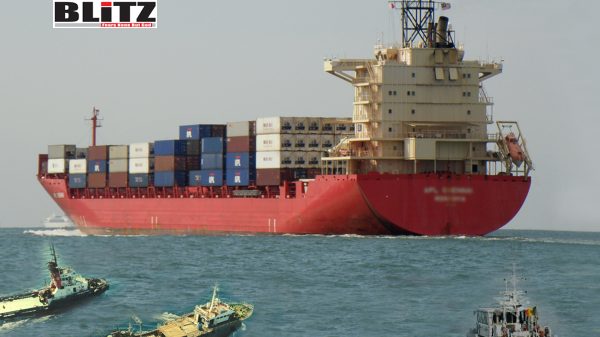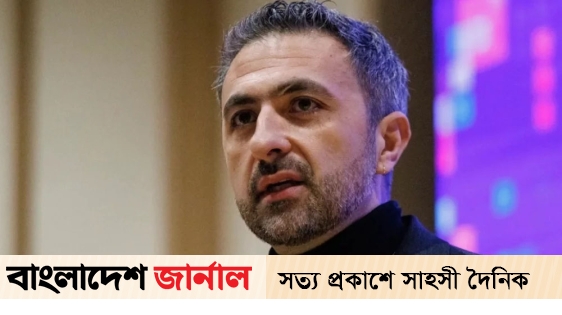Organized crime networks have increasingly turned Europe’s major seaports into lucrative hubs for drug trafficking, exploiting vulnerabilities in port security and raising serious concerns about corruption within port authorities, customs, and law enforcement agencies. According to a new joint report by the European Union Drugs Agency (EUDA) and the World Customs Organization (WCO), over 1,800 tonnes of illicit drugs were seized from 2019 to mid-2024 in shipments linked to European Union ports, signaling an unprecedented scale of smuggling activities.
The EU’s ports are strategic gateways not only for legitimate trade but also for the transit of enormous quantities of narcotics. The report highlights that 68 percent of the total drugs seized-amounting to 1,244 tonnes-were confiscated within EU ports, underscoring the extent of criminal infiltration directly at these points of entry.
Two ports stand out as the primary battlegrounds against drug trafficking: Belgium’s Port of Antwerp and the Netherlands’ Port of Rotterdam. Antwerp remains the continent’s principal hub for cocaine trafficking, with a staggering 442.9 tonnes seized across 572 operations during the reporting period. Rotterdam, Europe’s largest seaport by volume of cargo handled, follows with 180.7 tonnes of cocaine seized in 554 separate incidents.
These numbers are not just figures but indicators of systemic issues. The average cocaine seizure at these ports weighed around 533 kilograms per shipment, revealing that criminal organizations are not merely making small-scale runs but orchestrating large, industrial-level shipments. Similarly, cannabis resin seizures average 1.2 tonnes, showing the scale and sophistication involved.
Cocaine constitutes nearly 82 percent of the total volume of drugs intercepted in EU ports, making it the most significant substance trafficked via these maritime routes. This dominance reflects Europe’s position as a lucrative consumer market for cocaine, which is sourced primarily from Latin America and transported through complex logistics chains that involve sea freight.
The increasing size of shipments and the frequency of seizures in major ports highlight a worrying trend: organized crime groups have established deep networks within port operations. The report explicitly warns that this large-scale trafficking implies “a significant degree of penetration by organized criminal networks in EU ports, including the likely corruption of some port staff.”
The report raises serious alarms over the potential involvement or complicity of port workers, customs officials, and law enforcement personnel in enabling drug shipments to pass undetected. Ports are complex environments where thousands of containers are handled daily, and the pressure to expedite cargo often leads to vulnerabilities that criminal groups exploit.
Corruption may manifest in several ways: bribing dockworkers to bypass scanning procedures, falsifying documentation, or influencing customs officials to ignore suspicious cargo. Such practices not only facilitate trafficking but also undermine the integrity of the entire supply chain and port security apparatus.
European authorities face the difficult challenge of balancing efficient trade with thorough security checks, especially in ports that are among the busiest in the world. With drug shipments averaging several hundred kilograms, even a single compromised container can lead to significant quantities slipping through the cracks.
Beyond cocaine and cannabis resin, the report notes the trafficking of Captagon-an amphetamine derivative widely consumed in the Middle East. While Captagon accounted for 21.7 tonnes seized across just seven operations, its significance lies in the different trafficking dynamics it reveals.
The largest Captagon seizure, a massive 14.2 tonnes, occurred in 2020 at Italy’s Port of Salerno. Interestingly, since that operation, no further Captagon shipments have been reported at major EU ports, a fact that raises questions about shifting trafficking routes or methods. The report suggests two possible explanations: traffickers may have shifted to smaller, less scrutinized ports or adopted alternative, non-maritime methods for smuggling.
Because the demand for Captagon within Europe remains limited, most shipments seized are believed to be destined for markets in the Arabian Peninsula, where the drug is reportedly in high demand. This highlights the transnational nature of drug trafficking networks, which constantly adapt to enforcement pressures and market demands.
The sheer volume of drug seizures and the concentration of trafficking activities in a handful of major ports reveal the scale and professionalism of criminal organizations operating in Europe. These groups are no longer operating in fragmented cells but rather as sophisticated, transnational enterprises capable of corrupting officials, manipulating logistics chains, and innovating their trafficking methods to evade detection.
This situation poses multifaceted threats. Public health is jeopardized by the influx of potent illicit substances. Economically, corruption and criminal activities erode trust in trade infrastructure and impose hidden costs on legitimate businesses. Politically and socially, the challenge undermines rule of law and public confidence in institutions tasked with safeguarding borders.
Authorities across the European Union are stepping up efforts to combat drug trafficking through ports by enhancing cooperation, intelligence sharing, and enforcement capabilities. EUDA and WCO emphasize the importance of coordinated action among member states to identify corrupt individuals, strengthen port security protocols, and use advanced scanning and detection technologies.
Training and awareness programs for port workers and customs officials are vital to reduce vulnerabilities, while judicial and law enforcement agencies need sufficient resources and legal frameworks to pursue traffickers and accomplices aggressively.
The report’s findings underscore that combating drug trafficking in ports requires a holistic approach-one that addresses both the operational challenges of inspecting millions of containers annually and the systemic issues of corruption and criminal infiltration.
The record volume of drugs seized at EU ports between 2019 and 2024 reveals a pressing security challenge with far-reaching consequences. As organized crime syndicates continue to exploit vulnerabilities in ports like Antwerp and Rotterdam, European authorities face an uphill battle to close loopholes, dismantle trafficking networks, and restore integrity to critical trade gateways.
The fight against drug trafficking at EU ports is not merely about intercepting shipments but about protecting society, securing trade routes, and preserving the rule of law. Only with sustained vigilance, robust international cooperation, and firm action against corruption can Europe hope to curb this growing menace and safeguard its borders for the future.
Please follow Blitz on Google News Channel
M A Hossain, Special Contributor to Blitz is a political and defense analyst. He regularly writes for local and international newspapers.
crime-syndicates-exploit-eu-ports-to-smuggle-record-breaking-drug-shipments
















Leave a Reply